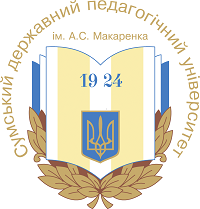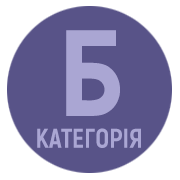THE WARRIOR-COSSACK ARCHETYPE (BASED ON S. CHERKASENKO'S NOVEL “THE ADVENTURES OF THE YOUNG KNIGHT”)
DOI:
https://doi.org/10.32782/philspu/2025.11.19Keywords:
warrior archetype, Cossacks, national myth, historical novel, S. Cherkasenko, identityAbstract
The article explores the artistic realization of the warrior-Cossack archetype in Spiridon Cherkasenko's historical adventure novel, «The Adventures of a Young Knight». The relevance of this work is due to Ukraine's current need to form its own national idea and value system. Appealing to historical and literary archetypes, which are the bearers of the nation's mental virtues, gains special importance in the context of searching for integral symbols. The work combines a literary approach with socio-cultural reflection.The purpose of the study is to analyze the artistic modeling of the warrior-Cossack archetype in S. Cherkasenko's novel «The Adventures of the Young Knight». The paper examines the author's use of a system of positive and negative characters, as well as key oppositions, to reveal the evolution of this archetype from an idealized image to the embodiment of a complex national identity.The research was conducted based on historical-literary, cultural-historical, mythological, and structural-functional methods.The mythological approach allowed for the revelation of the archaic foundations of the image, while the structural-functional approach allowed for the analysis of its role within the novel's character system.The article analyzes the artistic modeling of the warrior archetype through a series of positive (warrior-leader, hero, elder) and negative (registered Cossack, trickster) characters, the juxtaposition of which occurs through oppositions such as «townspeople vs. Cossacks», «old vs. Young», and so on. Special attention is paid to the images of the Cossack hetmans Petro Sahaidachnyi and Bohdan Khmelnytskyi, endowed with the traits of «kharkternytsvo» and wise leadership, as well as the image of Pavlo Pokhylenko as the embodiment of a knightly ideal, who undergoes an initiation from a townsman to a true Cossack. The negative characters of Denys Kryha and Stakh Pronoza, as bearers of a destructive force, are also analyzed.
References
Мишанич О. В. В безмежжі зим і чужини. (Повернення Спиридона Черкасенка). С. Черкасенко. Твори: у 2-х т. Київ: Дніпро, 1991. Т. 1: Поезії. С. 5–42.
Плохій С. Козацький міф. Історія та націєтворення в епоху імперій / Авториз. пер. з англ. Миколи Климчука. K.: Laurus, 2013. 440 с.
Мошноріз М. М. Міфологема хутора в романі «Пригоди молодого лицаря» С. Черкасенка. Стратегії розвитку та пріоритетні завдання філологічних наук : матеріали міжнародної науково-практичної конференції, м. н. Запоріжжя, 21–22 липня 2023 р. Львів. Торунь : Ліха-Прес, 2023. C. 25–28.
Дяченко С. І. Пригоди молодого лицаря. Роман з козацьких часів Спиридона Черкасенка (типологія жанру, специфіка образної системи і способи її художньої реалізації). Автореферат дисертації кандидата філологічних наук; Національний педагогічний університет імені М. П. Драгоманова. Київ, 2001. 20 с.
Мошноріз М. Міфопоетика творчості Спиридона Черкасенка. Автореферат дисертації на здобуття наукового ступеня доктора філологічних наук; Київський національний педагогічний університет імені М. Драгоманова. Київ, 2021. 20 с.
Черкасенко С. Ф. Пригоди молодого лицаря. Роман з козацьких часів. Київ: Знання, 2015. 364 с.








